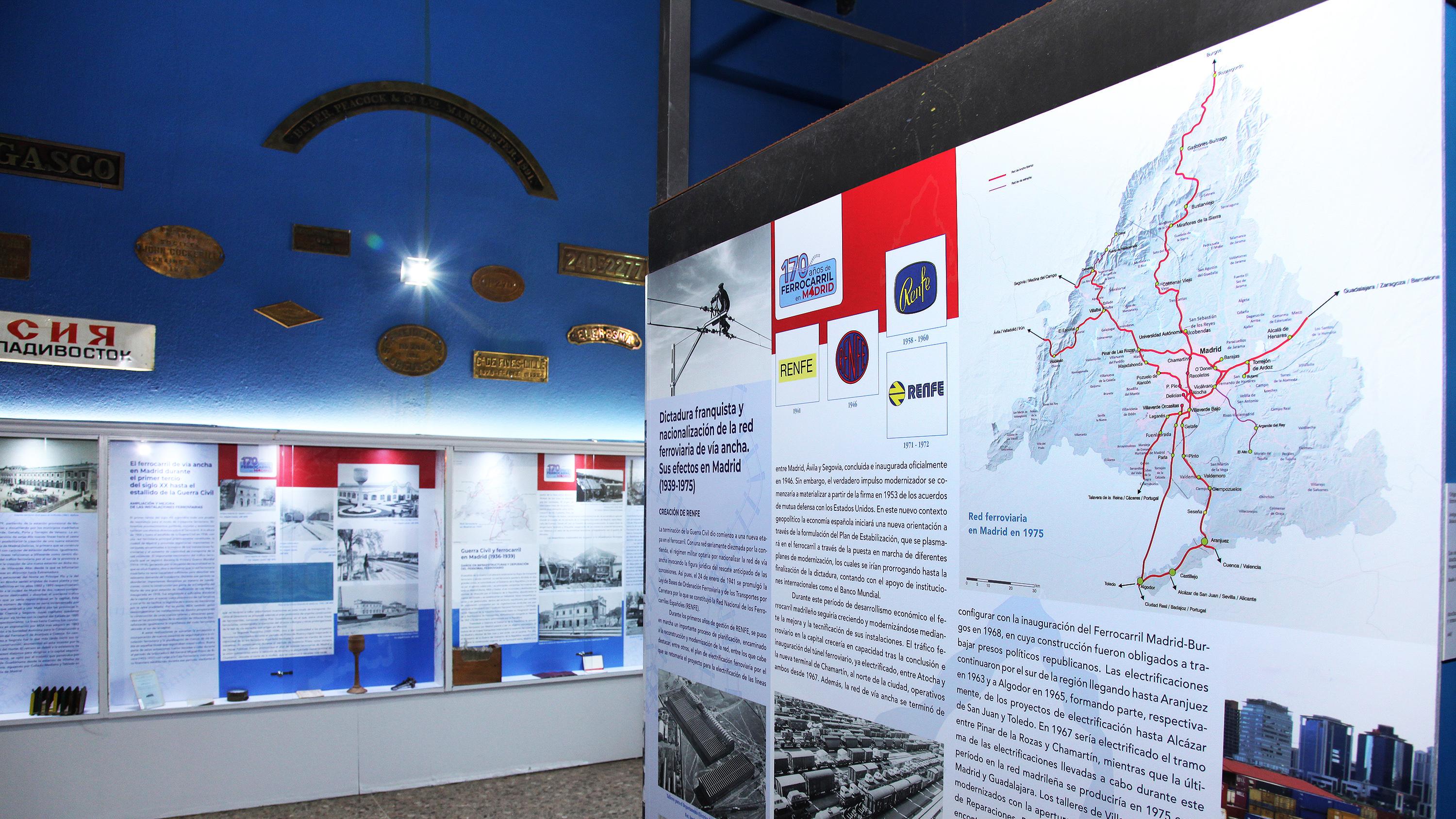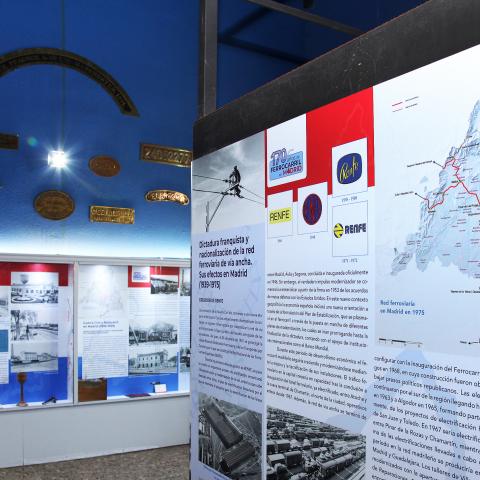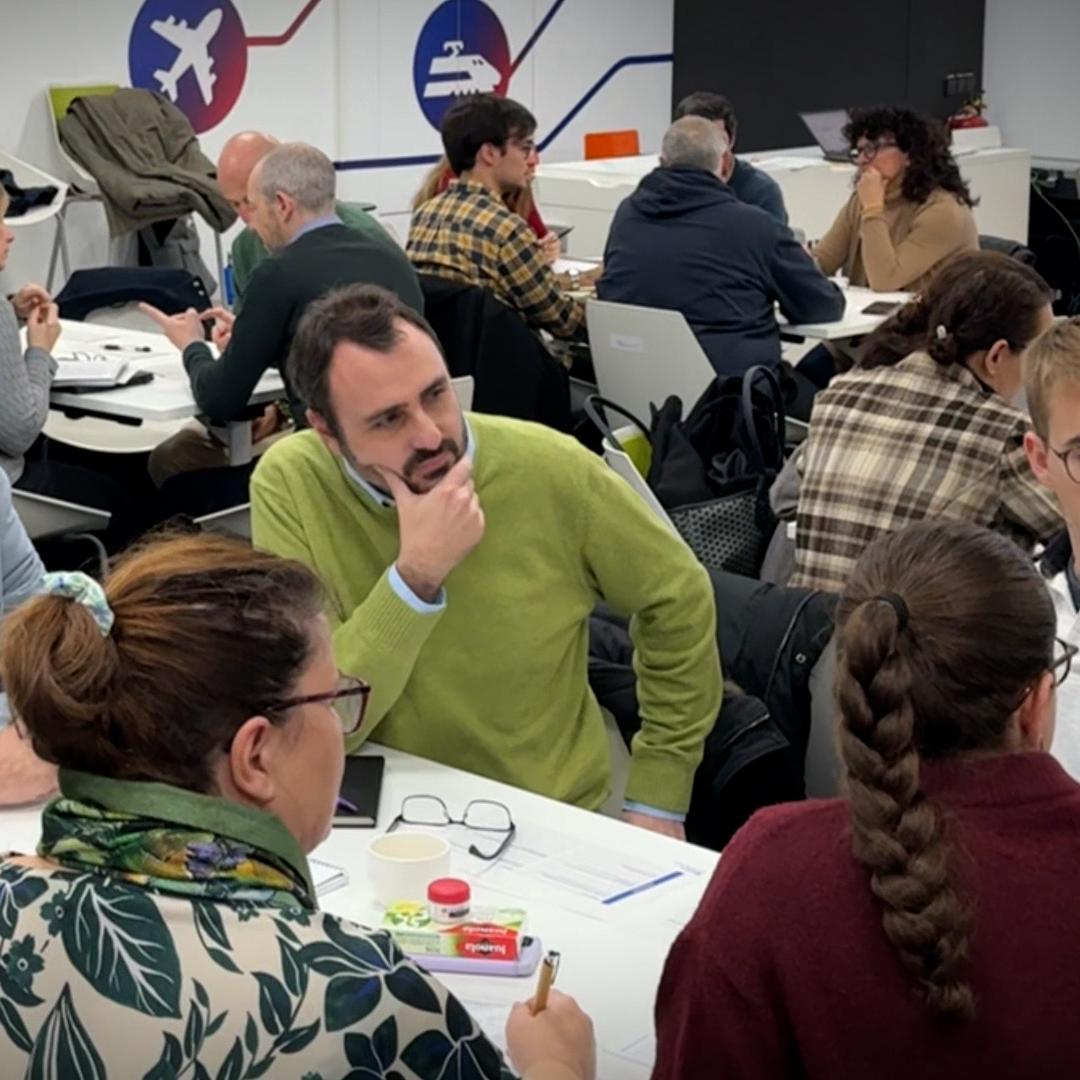
170 years of Railway in Madrid
Fundación de los Ferrocarriles Españoles organizes the temporary exhibition "170 years of the Railway in Madrid", which shows the implementation and development of the railway in Madrid, since the Madrid-Aranjuez line was inaugurated in 1851 becoming the second line in our peninsula.
Ineco, since its creation in 1968, has directly collaborated in the development of the Madrid railway network, actively participating in all phases: planning, design, technological development, project management and technical assistance for construction, commissioning service, maintenance and operation. Throughout all these years, our company has participated in the different technical areas, necessary to achieve optimum railway operation and maximum safety: infrastructure, track, signaling, energy, telecommunications, architecture and technological development. In addition, we have participated in the design and support in the construction and in the improvement of new passenger stations that the rail network has been requiring for its structuring, such as Atocha, Chamartín and Aranjuez stations, among others. It should be also noted the active participation in the implementation of the Cercanías Plan since 2013.
Until next May 15, you can enjoy this exhibition that begins in the first half of the 19th century, with the pre-industrial transport of stagecoaches and carts until the inauguration of the Madrid-Aranjuez Railway, on February 9, 1851. It also includes the importance of the legislative framework of the General Law of Railways of 1855 and shows the growth of the Madrid network until the end of the 19th century and the important events of the first third of the 20th century. The Civil War and the Francoist period, with the creation of Renfe in 1941, made way to the democratic transition and integration in Europe with the development of the high-speed network and the extension of the suburban network or the creation of Renfe Operadora and Adif. The exhibition also includes the development of the narrow gauge in Madrid, the evolution of rolling stock over these 170 years, railway intermodality and other urban transport networks and, finally, a panel dedicated to the railway cultural heritage existing in the Community of Madrid.








